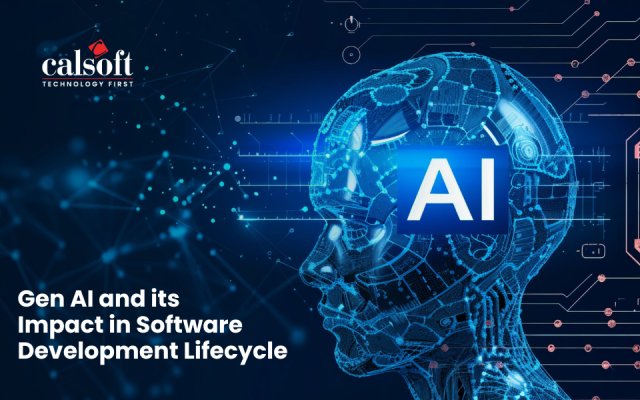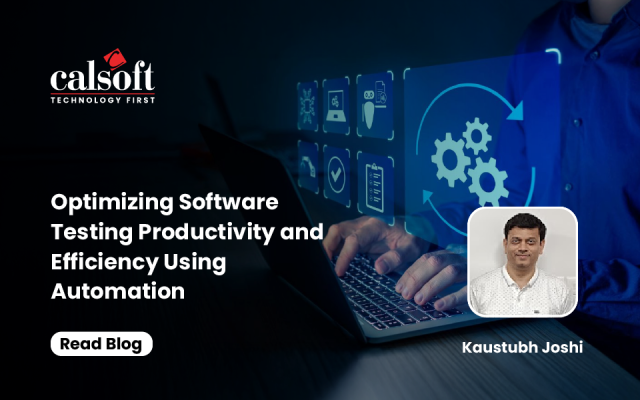Artificial Intelligence (AI) and Machine Learning (ML) are transforming different aspects of our life. Organizations across various industries are harnessing the power of AI to automate mundane, labor and time-intensive tasks, reduce costs, and make informed decisions. AI has entered our homes to tell us which channels to watch on TV and which movies to go for next; home security systems, personal digital assistants are getting upgraded as we speak, to cater to our every need.
The area of software development is no different. By applying problem-solving and logical reasoning algorithms, AI can be used to automate repetitive and time-consuming tasks in development and testing. Experts are trying to bridge the gap between human and machine-learning-driven testing capabilities.
Evolution of testing
Before we dive deep into the influence of AI on testing, let’s take a look at how far testing has evolved over the years:
1980-1990: Every aspect of a software product was manually tested in the early years, using the waterfall methodology.
1990-2000: Organizations started experimenting with different development approaches, mostly involving heavy automation tools.
2000-2010: Agile approaches started gaining precedence, shortening test cycles; testers began using more robust automation tools and open-source frameworks.
2010-2018: Testing started scaling up; approaches such as Continuous Testing, CI/CD, DevOps began gaining traction.
2018-Future: Smarter approaches to testing involving the use of AI and ML, veered towards automation and collaboration.
Testing automation – the current picture
Currently, testing practices employ test bots to automate activities such as application discovery, modeling, test generation, and failure detection. The machine learning techniques used to power these robots include, but are not restricted to, neural networks, decision tree learning, and reinforcement learning.
Traditional testing tools and frameworks have their limitations, unlike test bots which leverage Machine Learning to act under uncertain conditions, powered by data. Some of the AI-driven test approaches being used currently include:
- Visual testing: Using image-based learning to test how an application looks, feels, and operates.
- Differential testing: Comparison of different application overbuilds, classification of the differences observed, and capturing the learning derived from them.
- Self-healing automation: Depending on the changes in the UI, deciding which elements to select for testing.
- Declarative testing: The system decides how to carry out a test based on the intent input in a natural or domain-specific language.
Benefits of leveraging AI in test automation
- Timely spotting of bugs: So how expensive can bugs really get? Well, IBM’s Systems Sciences Institute reported that the cost to fix an error found after product release was four to five times more expensive than one uncovered during design – and up to 100 times more than a bug identified in the maintenance phase. Using AI, bugs can be found early on, providing significant cost savings.
- Improved test coverage: Test coverage predictions for a release can be more accurate with ML as compared to manual testing.
- Transparency of test activities: As compared to manual testing which focuses on the quantitative aspect of testing, ML facilitates qualitative testing with reliance on business-centered test inputs and validations.
- Reduction in test cycles: The testing time is reduced due to the automation of critical workflows (using approaches like Cross-browser testing) and quick access to the areas that testing will cover – including browsers, devices, and platforms.
- Effective project tracking: Machine learning algorithms can be used to derive actionable insights from all the testing data collected and effectively monitor the project’s progress.
- Improved software quality: Using AI & ML in the testing process keeps manual bias out of the picture, producing a comparatively higher quality of software than manual testing.
- Prediction of customer requirements: A wider testing mechanism powered by AI & ML analyzes customer requirements over a period, understands the in-demand features, and can help modify the company’s testing approach accordingly. This eventually leads to cost-effective testing processes and higher profits.
Testing frameworks and how they help
AI-based testing platforms can spot changes much better than human beings; with continual updates to a product being made, even the slightest changes can be noted. Let’s take a look at some of the leading testing frameworks and what value they bring to the table:
- Test.ai: This is a mobile test automation that uses Artificial Intelligence to perform regression testing. It is a test monitoring tool that helps with fetching you the performance metrics on your application.
- Testim.io: You can write, execute, and maintain automated tests using this tool. It is driven by machine learning and focuses on end-to-end, functional, and UI testing. It helps improve the stability of test suites.
- Appvance: This tool uses AI to generate user behavior-based test cases. Its test offerings cover what end users usually do on production systems. If you’re looking for user-centric testing, this would be a good choice.
- Functionize: Powered by Machine Learning, this tool is useful for functional testing with quick test creation without scripts, swift execution of multiple tests, and more.
- ReportPortal: This is an open-source tool that helps testers to manage all their testing reports in a single dashboard view, and in real time, which helps in real-time debugging.
From here to the future
In the future, the delivery cycles will continue to shrink and the pressure on testing will increase. Continuous testing in such times might not be able to keep pace with this. This calls for working smarter, and preparing to change with the changing times. In the forthcoming era of smart cities and self-driving cars, there will be no room for error. We will need to step up to these challenges by embracing AI to ensure bug-free products.






